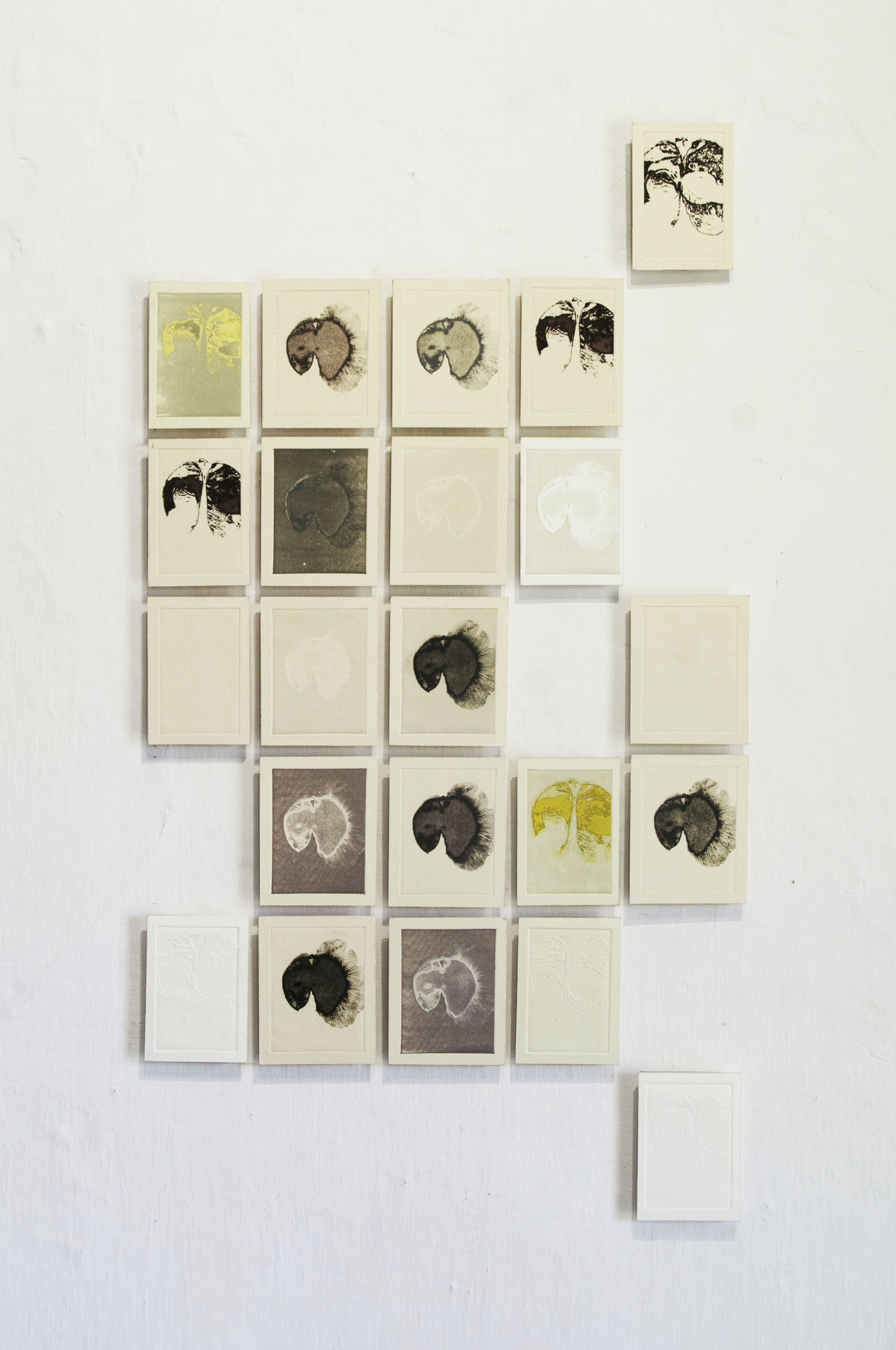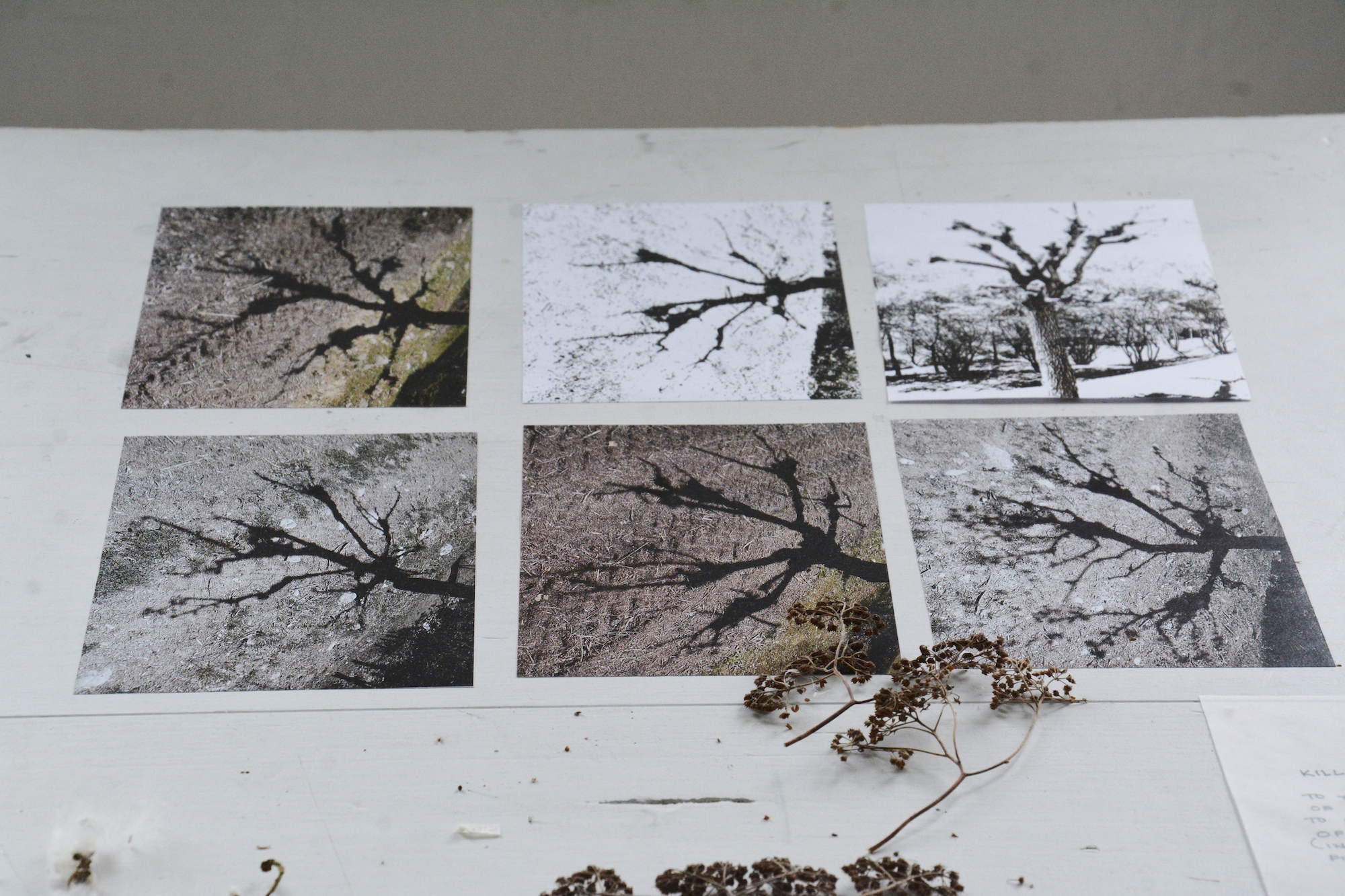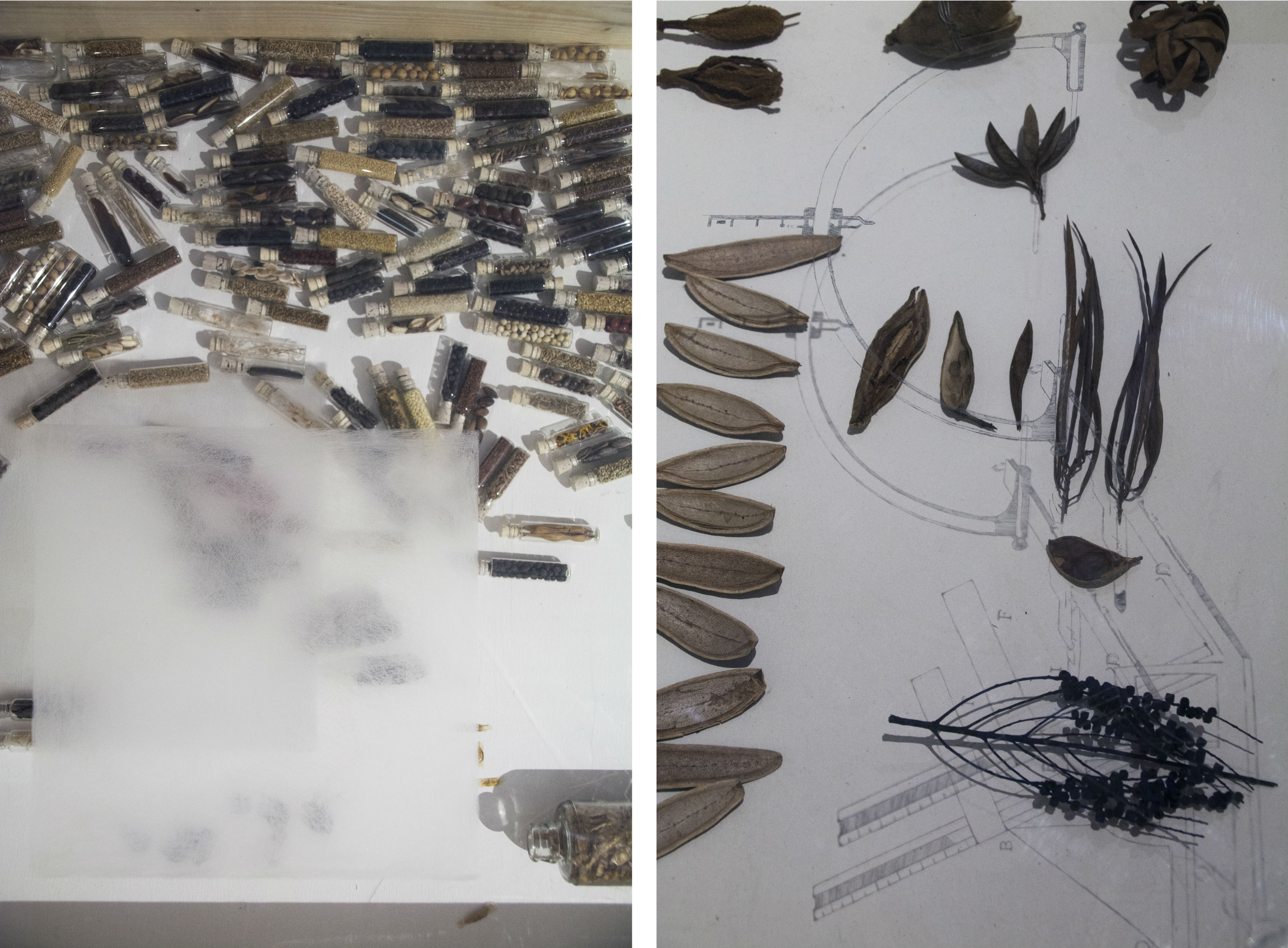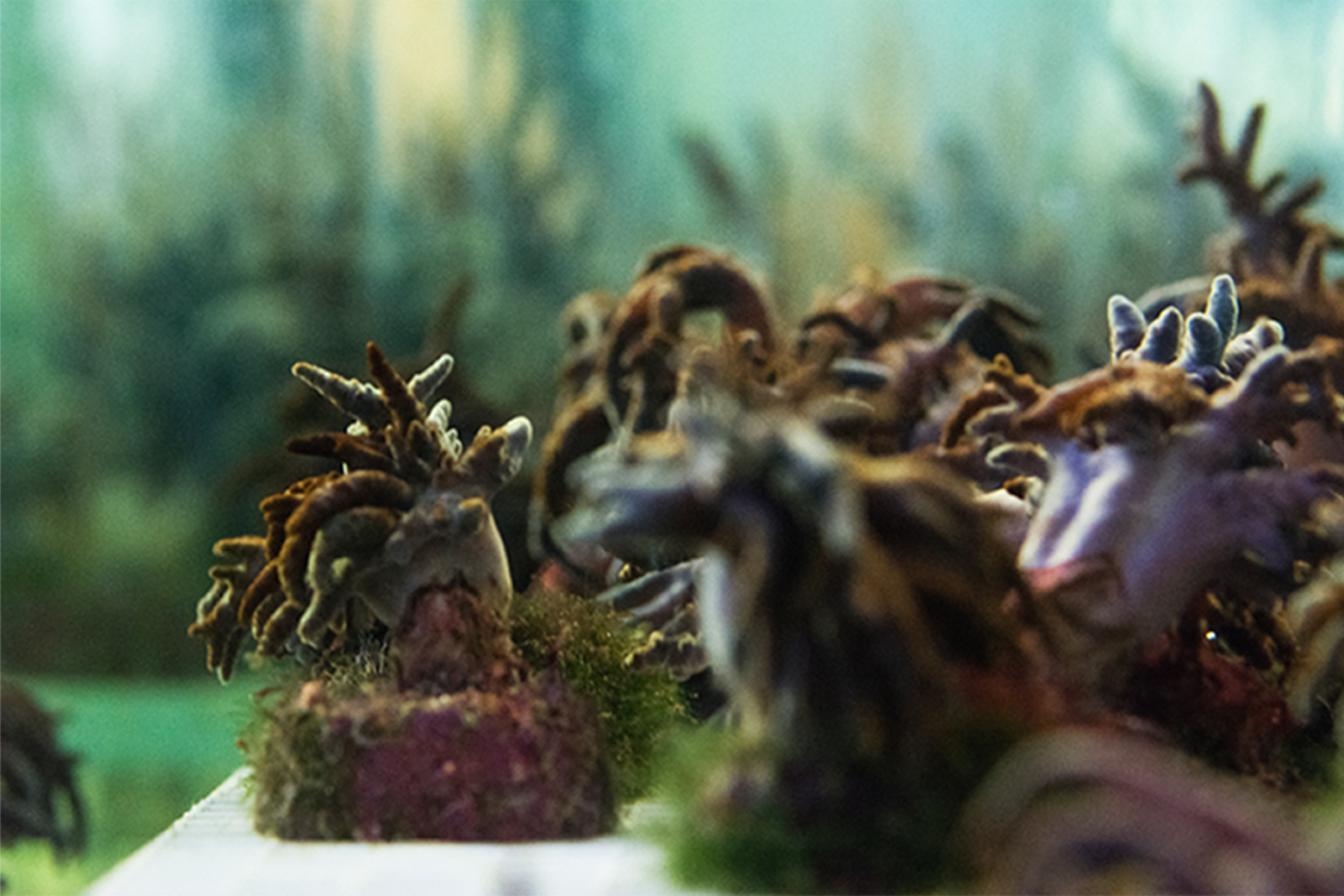A Wandering Artist: An Interview with Sarasija Subramanian | Baroda, India
Join EAS writer Uji Venkat in conversation with Sarasija Subramanian, a young artist whose career path has taken her to different natural as well as cultural environments, as she explores growth and belonging through her art. Her work 'Sea Monsters/Breed in Captivity' has been part of the Building Bridges three-city exhibition, and it is still in view at the Gallery Sumukha in Bangalore.

Sarasija and I began our conversation with a discussion of archives. Her work presents a set of artifacts that are alive in that they are informed by ever-shifting layers of past, present and future contexts and perspectives, co-evolving meaning and stretching understanding. I had never been so captivated by an archive. What I had thought was “preservation of the inanimate,” she redefined for me as “perspective” and “life.” In her piece “Bred in Captivity” created for Building Bridges— a partnership of Emergent Art Space with curator Ushmita Sahu engaging 13 young artists from around the world in a dialogue that led up to an online and traveling exhibition—Sarasija continues to explore multiple perspectives and illusions of belonging. During her stay at an Irish coral farm with Interface Residency, she compiled images addressing the morality of breeding organisms in captivity if they have no notion of “home” to begin with. Do bred-captives form a new sense of home or have an innate attachment to what should have been home? Sarasija is interested in investigating this question of in vivo versus in vitro contexts as she travels and immerses herself in a diversity of cultures across the globe.
Where did you grow up and go to school?
I grew up in Delhi and completed my early education at a free-progress school under the Aurobindo Ashram in Mirambika. For high school, I attended the International Baccalaureate Shri Ram School.
I’m now based in Baroda, where I did my Bachelor’s and Master’s. For the past two years, I’ve been moving around quite a bit. Having spent an extended period of time in Baroda, where the comforts of the art college and the community there acted as a safety net for my practice to grow, and for me to have grown-up in the large city of Delhi, I think it's important for me to keep moving as much as possible. I’ve been to Europe for a couple of residencies and to various places in India. My projects take me to different cities for a few months at a time which is ideal as I have been in Baroda for six years now, but it's also important for me to have a studio somewhere where it's quiet.

Do you have a preferred medium? How do you choose your media?
My media have oscillated between drawings, photographs, alternative photography, printmaking techniques, and objects themselves. Once in a while I have also used sculptural techniques and the media do continue to grow depending on what I’m working on.
Artists like Gerard Richter have explored the medium of photography as a painting, as a window opening to new worlds. On a partially contradictory note, Barthes’ talks of photography as ‘necessarily referring to a real referent / object, placed in front of the lens’, as opposed to a painting that can ‘feign it’. This statement has led me to look at photography not as a tool at my disposal, but instead as a way of understanding the world, a tool I have gradually employed in various ways. My photographs do not act as paintings or drawings, instead my drawings, objects, text and paintings act as photographs; each attempting to capture a momentous and temporal intangible that required a metaphorical click of the shutter at just the right moment.

What interested you about archiving as an art practice and breeding in captivity as a theme?
To be honest, for a very long time I wanted to get into science and math. I think I always did art in one way or another and I studied art from 9th to 12th grade as part of IB [International Baccalaureate Program]. I always had one leg in literature and texts, which is slowly seeping into my work, but I wasn't even sure of my direction even after I joined my Bachelor's. I think it took me a few years after my bachelor's to be sure I wanted to do it.
Before my Master’s started, I collected objects obsessively, something I had done subconsciously most of my life. First it was natural objects, primarily seeds. As I began to work with them, conversations with mentors moved towards addressing the act of collecting, colonization, and the modes of power used. I grew an understanding of these collections in the context of the India's history. That was when I began to look at archiving, more to understand modes of display rather than actually an area of conceptual interest. Texts like “Archival Impulse” by Derrida and Archive Fever by Okwui Enwezor are what really led that to grow.
“Bred in Captivity” is a theme I have been looking at only for a few months now. Working on the Building Bridges project in Ireland, during my residency at a coral farm, led me to try and draw links between my own practice and the constant dialogues in the blog which dealt with ‘home’ and cultural drifts between communities. Looking at “home,” something I hadn’t really addressed before, made me focus on a centre which was stimulating Ireland’s naturally intense environments to create a self-sustaining system, to be able to leave the creatures untouched in their natural environment – and only “grow” on their own.

In your biography, you talk about how your work “incorporates histories and presents.” Do you see a projection of the future in it? Do your views on the paradoxical questions about captivity have an impact on your final product?
This is a beautifully worded question; I never thought of it that way before! I guess it is inevitable that the future exists in the work, especially since the system of an archive itself, in its purest form, is a desperate act of saving something for the future. The sense of an ‘impending doom’ is very present, but I don’t know how much it projects to the future. It's more to understand what archiving means for me today, and what is ‘urgent’ for an artist today to hold on to or to address.
How is your artwork a reflection of you? You talk about how even archival work, when the purpose is preservation, is affected by the artist.
This is a particularly difficult question to answer, especially since it is something I have faced and tackled before but never really resolved. I think in one way or another all artwork is controlled by what an artist ‘reacts’ to, and for me it happens to be nature in a very intense fashion.

But before I started this trajectory, for personal reasons, I was also tackling the idea of mental abnormality and the ways in which an artist would address this ‘division’ of a society into ‘normal’ and ‘abnormal’. The ‘otherization’ which is so prevalent in this discourse is not one that I have managed to address within its own space because it seems too delicate. Yet, it has seeped into my handling of the natural world as the ‘other’ and the violence that exists in handling such a gap.
What direction would you like to expand your work into next?
There has always been a narrative tendency in my practice but it is usually very much in the background. The current project, or set of projects, are an attempt to bring that to the fore and truly create narrative trajectories that oscillate between fact and fiction by using science and myth from around the world.
What was your experience being in dialogue with international artists in the Building Bridges project and how has your work grown since you started?
While initially the blogs seemed to be running parallel to each other, it was particularly fascinating to see how most people’s themes began to overlap and the conversation brought a lot of insecurities about belonging together to one space. Having a practice that was always a little detached from such debate, but also always being aware of my own hybrid individuality, the way that colonization and stereotypes were discussed from across the globe was both disconcerting and a leveling of the playing field.

One of the most interesting, recurring themes in both the blogs and the conversations was the one of home, belonging, cultural drifts, and displacement. These were at the top of my mind, and though it will take time for them to truly seep into my practice, it did drive me to explore the idea of “Bred in Captivity” in relation to the sense of belonging that one may or not feel in a space that may in actuality provide everything ‘essential’.
In what direction would you like to see the expansion of this project and of EAS in their efforts to foster understanding through art among artists from different countries and cultures?
I think after talking to Ushmita [curator of the Building Bridges project] about how this project came to be and how it has developed, a few of us who met in Delhi during the show were talking about how these shows seemed like step one to something that is yet to happen. A lot of us have given works that are very much like excerpts, and I think it would be truly fascinating for a multicultural show like this to have a follow up in a few months, a second stage of sorts.
Thank you for the wonderful conversation and sharing your story, Sarasija.
Sarasija Subramanian (1992, Chennai, India) lives and works in Baroda and New Delhi. She attained her BFA and MFA in Painting from MSU Faculty of Fine Arts, Baroda. She has participated in several shows and residencies including Archival Dialogues, Mumbai; Città dell'Arte, Biella, Italy; the Dumas Art Project, Surat; the Inlaks-UNIDEE Residency, Italy; Space 118 Residency, Mumbai, and the Interface Residency, Ireland.
She has been an active participant in the Building Bridges project and in the three exhibitions, Kolkata, Delhi and Bangalore, that have marked the conclusion of the project.
You can find more of Sarasija’s work on her website: https://sarasijasubramanian.cargocollective.com/